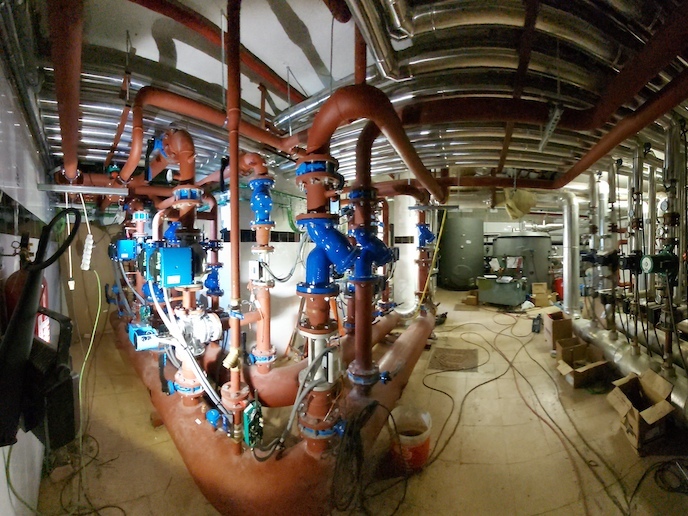Low-temperature technology greens urban heating
As its name suggests, district heating(opens in new window) (DH) is a means of distributing heat generated in a centralised location to residential homes and commercial premises in a given area. This is achieved through a system of insulated pipes. In urban environments, DHs are often highly efficient, especially when plants produce both heat and electricity simultaneously. They have also proven to be reliable for decades.
Moving away from fossil fuel dependence
As a result, there is growing interest in harnessing the efficiency of DHs to facilitate the decarbonisation of heating energy, and for this system to be part of Europe’s green transition. DHs could make more use of renewable and waste heat sources, for example, helping Europe to move away from fossil fuel dependence. “The current situation of DH systems however is far from zero emissions,” notes RELaTED(opens in new window) project researcher Antonio Garrido Marijuan from Tecnalia(opens in new window) in Spain. “Renewable energy represented only 18.1 % of the total global energy generation for heat in 2017. This was mostly from biomass, with smaller contributions from solar, thermal and geothermal energy sources.” One challenge is that DH networks are complex systems that serve large areas. Continuity of supply and meeting heating demand at all times is critical. This sees limited enthusiasm from both networks and consumers for making the transition to low-carbon fuel sources.
Pilot energy projects
The goal of the EU-funded RELaTED project was therefore to propose and develop novel technical solutions. These were then tested in pilot settings. Central to this was the concept of transitioning to ultra-low thermal(opens in new window) (ULT) DH networks. “DHs will need to reduce their operational temperature in order to integrate low-grade industrial heat sources and accept a larger share of renewable energy sources,” explains Garrido Marijuan. Different technology options – as well as barriers – related to achieving this aim were discussed. “These included the challenges of domestic hot water production and ensuring adequate comfort levels. Viable technologies included new substation technology, heat pump technology, and integrated solar thermal system technology.” Integrated ULT concepts were then demonstrated(opens in new window) at four sites, which provided contrasting climatic conditions, infrastructure and urban density. These pilots included a large DH network in Serbia, a new urban development in Denmark, an operational DH network in Estonia, and a corporate DH network in Spain.
Energy savings and reduced thermal losses
This work successfully underlined the feasibility of this new generation of ULT DHs. Together, the demonstration pilots achieved direct energy savings from reducing thermal losses of up to 570 MWh/year, with more than 10 GWh/year provided by injecting waste heat. Being part of RELaTED also enabled several industrial partners to fine-tune their products, to the point where their technology is almost market ready. There are hopes the pilots’ technology demonstrated here will now be installed elsewhere. For Garrido Marijuan, the main beneficiary will be society. “We will be able to rely on decarbonised systems to heat our cities, which accounts for 40 % of total energy consumption in Europe,” he says. “Further efforts must now be made for a large replication of the concept in all the old-fashioned DH networks, allowing for a massive uptake of renewable energy and waste heat sources.”







